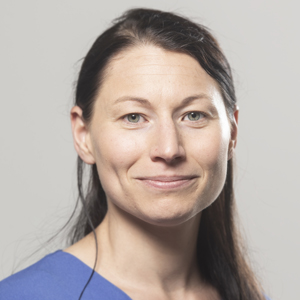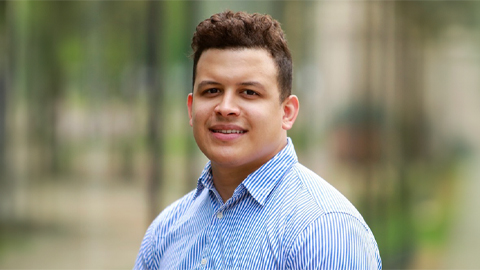
Focusing on a field, then diversifying skills
Growing up in New Zealand, Jodi Brewster was fascinated by her older sister’s descriptions of high school–level science. “I just couldn’t wait to be there and learning it for myself,” she said. “I would be reading her books and trying to understand her notes.”

After dabbling in physics, chemistry and biology during high school, Brewster enrolled at University of Otago. She knew she wanted to study science but struggled to settle on a discipline. “I couldn’t choose between chemistry and biology, so I was like well, why not both?” she said. She settled on biochemistry, “not really understanding it isn’t just biology plus chemistry; it's a little bit of its own discipline.”
Brewster earned her Ph.D. in biochemistry from the University of Otago. Her thesis identified and characterized a protein responsible for carotenoid binding and transport in sea urchin gonads. “When I finished my Ph.D., it wasn’t really a convenient time for me to go overseas,” she said. “My husband was in a good place in his career, so we decided to stick around for a few years.”
Brewster completed a series of short postdoctoral appointments at the University of Otago, during which funding dictated the focus of her research. She also worked part time as a medical writer. She said that switching projects so frequently diversified her technical skills and expanded her knowledge of experimental systems, biochemistry and structural biology.
Now a postdoctoral associate research fellow at the University of Wollongong, Brewster studies enzymes involved in viral DNA replication using structural biology. She also supervises students and delivers lectures.
Kinetic and structural characterization of the enzyme MetY
Methionine, an essential amino acid, is synthesized in bacteria via either trans-sulfurylation or direct sulfurylation. The latter route is more common but not well studied relative to the former.
The enzymes that catalyze trans- and direct sulfurylation are homologs thought to be derived from a common ancestor. “What’s really fascinating about the three modern homologs is that the root mean square deviation if you overlay the structures is around two Ångströms across 450 or so amino acids, which is nuts,” Jodi Brewster said. “And the active site residues are also highly conserved. Yet the sequence identity is less than 40%. Even more interesting is that the enzymes can’t cross-react.”
In a 2021 Journal of Biological Chemistry article, Brewster and colleagues characterized the kinetics and structure of a MetY enzyme from the anaerobic bacterium Thermotoga maritima that catalyzes direct sulfurylation. Their results provide clues about how sulfurylation enzyme homologs achieve specificity.
Their kinetic activity data demonstrated that MetY processes the direct sulfurylation substrate about a thousandfold more efficiently than the trans-sulfurylation substrate.
The team also obtained X-ray crystal structures of MetY alone and bound to a reaction intermediate. Through close analysis of the enzyme’s active site and computational molecular docking, the team discovered that the identity of residue 270 may regulate which sulfurylation substrate can bind to the active site, providing a basis for enzyme specificity.
Brewster hopes one day to lead her own research group, which would build on the results of this study.
Enjoy reading ASBMB Today?
Become a member to receive the print edition monthly and the digital edition weekly.
Learn moreGet the latest from ASBMB Today
Enter your email address, and we’ll send you a weekly email with recent articles, interviews and more.
Latest in People
People highlights or most popular articles

This MOSAIC scholar believes in the power of perseverance
Wagner Silva Dantas aims to develop new approaches to reducing fat mass while preserving muscle mass by studying a crucial regulator for maintaining redox balance.

ASBMB honors 2024 outstanding student chapter
Founded just three years ago, the University of South Alabama chapter shows leadership in educational activities, commitment to increasing public scientific awareness and more.

Honors for Shan, Landick and Bankston
Awards, promotions, milestones and more. Find out what's going on the lives of ASBMB members.

In memoriam: Ulrich auf dem Keller
A professor at the Technical University of Denmark, he was a leader in wound healing research and mass spectrometry-based proteomics technology.

MOSAIC scholar explores enzymes
Organic chemist Edwin Alfonzo's scientific journey took an unexpected turn when he discovered the world of enzymes.

Honors for Wright, Chiu and Flanegan
Awards, promotions milestones and more. Find out what's going on in the lives of ASBMB members.

